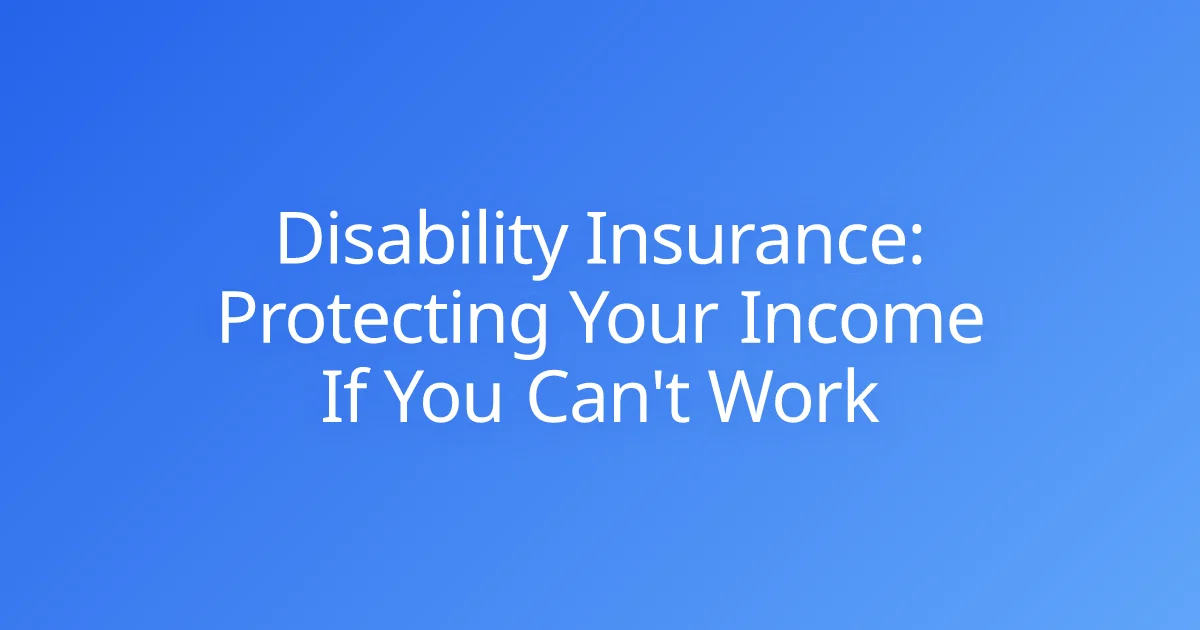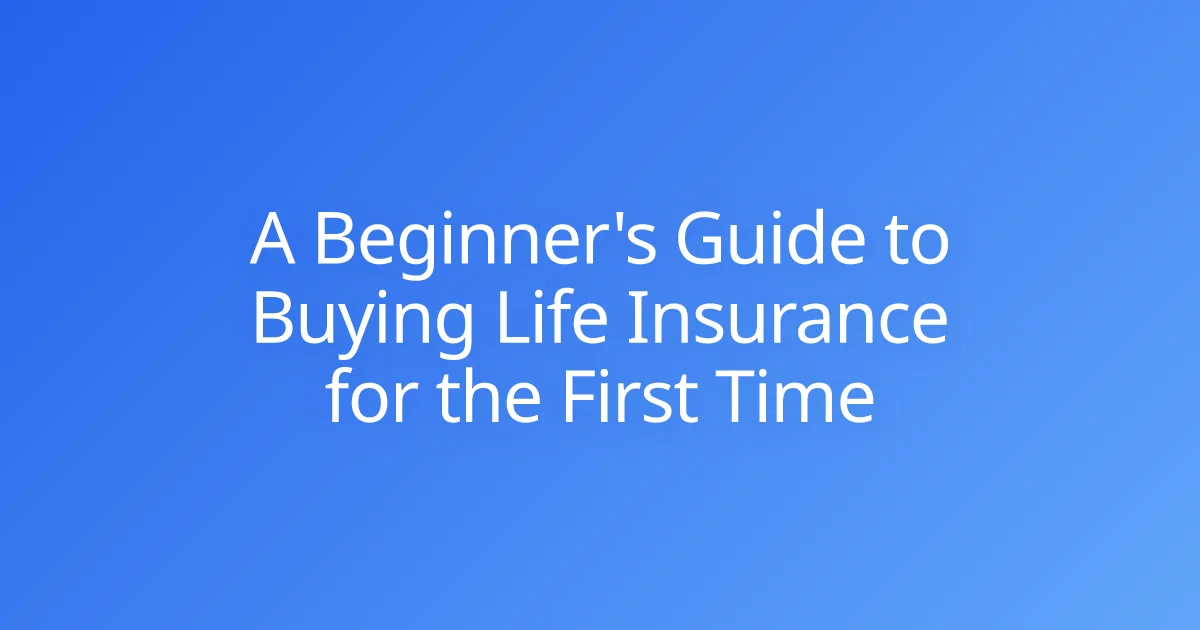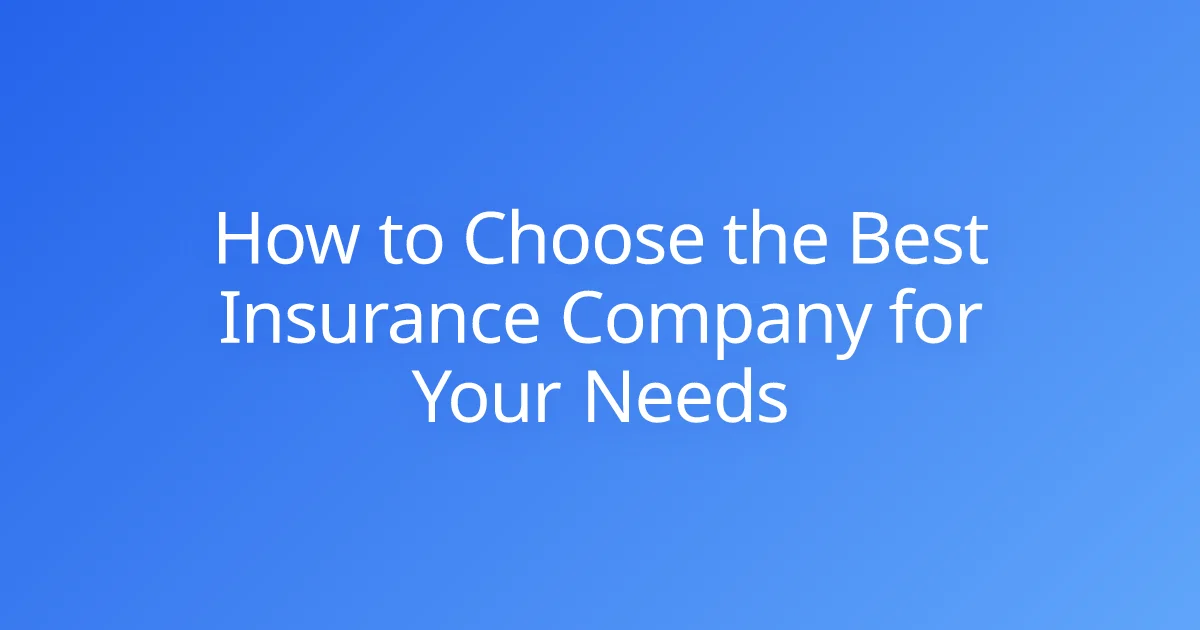Disability Insurance: Protecting Your Income If You Can't Work
You diligently work to earn a living, support your family, and build a financial future. You likely insure your car, your home, and your health. But what happens if an unexpected illness or injury suddenly makes it impossible for you to earn an income? While savings might offer a temporary cushion, a prolonged period of inability to work can quickly deplete even robust emergency funds, leaving you vulnerable to financial instability, mounting bills, and uncertain futures. This common blind spot in financial planning overlooks the single greatest asset most people have: their ability to earn a living.
At The Policy Explainer, we simplify complex insurance concepts to empower you with clarity and foresight. This comprehensive guide will illuminate the vital role of Disability Insurance, explaining precisely how it works, detailing the crucial protection it offers, and emphasizing why it's indispensable for protecting your income if you can't work. Our goal is to equip you with the knowledge to safeguard your financial well-being, ensuring peace of mind even in the face of life's most unpredictable challenges.
What is Disability Insurance? The Income Safety Net
Disability Insurance is a financial product designed to replace a portion of your income if you become unable to perform the duties of your job due to illness or injury. Unlike health insurance (which pays for medical treatment) or life insurance (which pays a death benefit to beneficiaries), disability insurance provides a regular income stream directly to you, the policyholder, while you are out of work.
Its core purpose is to provide a financial safety net for your most valuable asset: your ability to earn a living. The unfortunate reality is that disabilities are far more common than many people realize, often affecting individuals long before retirement age.
The Two Main Types: Short-Term vs. Long-Term Disability
Disability insurance typically comes in two primary forms, distinguished by the length of time they provide benefits.
Short-Term Disability (STD)
Short-Term Disability (STD) insurance provides a portion of your income for a limited period, typically ranging from a few weeks to up to six months (though some policies may extend to a year or two).
- Benefit Period: Usually 3 to 6 months.
- Elimination Period (Waiting Period): The time between the onset of your disability and when benefits begin. For STD, this is usually very short, often 0-14 days.
- Common Causes: Recovery from surgery, broken bones, pregnancy and childbirth (maternity leave), or short-term illnesses that prevent you from working.
- Source: Often provided by employers as a benefit, but individual STD policies can also be purchased.
Long-Term Disability (LTD)
Long-Term Disability (LTD) insurance is designed for more severe or prolonged illnesses and injuries that prevent you from working for an extended period, potentially for years or even until retirement.
- Benefit Period: Can range from 2, 5, or 10 years, or extend until you reach age 65 or 67. Some policies even offer lifetime benefits.
- Elimination Period (Waiting Period): Significantly longer than STD, typically 30, 60, 90, 180, or even 365 days. LTD benefits usually kick in after STD benefits run out or after your emergency savings have been depleted.
- Common Causes: Chronic illnesses (e.g., severe arthritis, cancer, heart disease), serious accidents resulting in permanent impairment (e.g., spinal cord injury), or debilitating mental health conditions.
- Source: Can be employer-provided (often limited) or purchased individually for more comprehensive coverage.
For true income protection, a combination of both STD and LTD, or a robust individual LTD policy, is often recommended, as they cover different phases of a potential disability.
Why You Need Disability Insurance: Beyond Just Your Health
Many people believe they are immune to disability, or that their existing safety nets are sufficient. This often leads to a dangerous gap in financial planning.
The Unforeseen Reality of Disability
- High Incidence: Statistics from the Social Security Administration indicate that just over 1 in 4 of today's 20-year-olds will become disabled before reaching age 67. You're far more likely to become disabled during your working years than to die prematurely.
- Causes of Disability: Most disabilities stem from illnesses (e.g., cancer, heart disease, mental health conditions) rather than dramatic accidents. These are health issues that often don't qualify for Workers' Compensation.
Savings Aren't Always Enough
While an emergency fund is vital, even a substantial one can quickly dwindle during a prolonged period of no income. If you can't work for months or even years, how long could your savings truly last while still covering mortgage payments, groceries, and daily living expenses?
Protecting Your Lifestyle and Financial Goals
Your income supports your current lifestyle – your home, car payments, food, utilities, and discretionary spending. It also funds your future goals like retirement savings, children's education, or debt repayment. Without Disability Insurance, a loss of income jeopardizes all of this. It ensures you can continue to meet financial obligations and stay on track with your long-term aspirations.
Protecting Your Family
If you have dependents, your income is crucial for their well-being. Disability Insurance acts as a lifeline, ensuring your family's financial stability and security even if you're unable to provide for them through work. It covers immediate needs and helps maintain their standard of living.
Distinction from Workers' Compensation
It's critical to understand that Disability Insurance is different from Workers' Compensation. Workers' Comp only covers injuries or illnesses that are a direct result of your job. The vast majority of disabilities, however, occur outside the workplace (e.g., a car accident on your day off, a non-work-related chronic illness), making disability insurance the necessary coverage.
Key Factors Affecting Your Disability Insurance Policy
Understanding the nuanced features within a Disability Insurance policy is crucial for choosing the right coverage.
1. Definition of Disability
This is perhaps the most important feature and dictates when benefits are paid.
- "Own Occupation" Disability: This is the most comprehensive and desirable definition. It means you are considered disabled if you cannot perform the main duties of your specific occupation, even if you could perform a different job. (e.g., a surgeon who can no longer perform surgery due to nerve damage, but could teach. They would still receive benefits under this definition). This type of policy is more expensive.
- "Any Occupation" Disability: This is a more restrictive definition. You are considered disabled only if you cannot perform the duties of any occupation for which you are reasonably suited by education, training, or experience. (e.g., the surgeon in the example above would not receive benefits if they could teach, as teaching is an occupation for which they are reasonably suited). This type of policy is less expensive.
- "Modified Own Occupation": A hybrid, often covering "own occupation" for a set period (e.g., 2-5 years) and then switching to "any occupation."
2. Benefit Period
This specifies how long the policy will pay benefits once you qualify.
- Common Periods: 2 years, 5 years, 10 years, to age 65, or for life.
- Impact: A longer benefit period means higher premiums, but greater long-term security.
3. Elimination Period
As discussed, this is the waiting period from the onset of disability until benefits begin.
- Common Periods: 30, 60, 90, or 180 days.
- Impact: A longer elimination period results in a lower premium, as you bear more of the initial risk. Ensure your emergency savings can cover this period.
4. Benefit Amount
This is the percentage of your gross income the policy will replace.
- Typical Range: Insurers usually pay 50% to 70% of your pre-disability gross income. They don't cover 100% to incentivize return to work.
- Consideration: Benefits from individual policies are typically tax-free if you pay the premiums with after-tax dollars. Employer-provided benefits may be taxable if the employer pays the premiums.
5. Riders (Optional Add-Ons)
Riders enhance your policy but typically add to the cost.
- Cost of Living Adjustment (COLA) Rider: Increases your benefit amount each year during a long-term disability to keep pace with inflation.
- Future Increase Option (FIO) Rider: Allows you to increase your coverage amount in the future (e.g., as your income grows) without additional medical underwriting.
- Waiver of Premium Rider: Waives your premium payments while you are receiving disability benefits.
- Partial or Residual Disability Rider: Pays a partial benefit if you can work part-time or in a reduced capacity but still suffer income loss due to disability.
Factors Affecting Your Disability Insurance Premiums
Just like other forms of insurance, the cost of Disability Insurance is highly individualized.
- Age: Younger applicants pay significantly less.
- Health: Your medical history, current health conditions, and lifestyle (e.g., smoking status) are major factors. Excellent health yields lower premiums.
- Occupation: Higher-risk occupations (e.g., construction workers, police officers) will have higher premiums than lower-risk office jobs, or may only qualify for "any occupation" policies.
- Benefit Amount & Benefit Period: Higher monthly benefits and longer payment periods mean higher premiums.
- Elimination Period: A longer elimination period leads to lower premiums.
- Riders: Adding optional riders will increase your premium.
- Gender: Historically, women often pay more for individual disability insurance due to longer life expectancies and higher claims for conditions like musculoskeletal disorders.
Choosing the Right Policy: Actionable Steps for Income Protection
Securing the right Disability Insurance for your unique situation is a critical step towards comprehensive financial security.
1. Calculate Your Income Replacement Needs
- Actionable Tip: Determine how much of your monthly income you truly need to cover essential expenses (mortgage/rent, utilities, food, debts, insurance premiums). Aim for 50-70% of your gross income, considering whether the benefits will be taxable.
2. Review Any Employer-Provided Coverage
- Actionable Tip: If your employer offers STD or LTD, understand its specifics:
- What percentage of income is replaced?
- What are the benefit and elimination periods?
- What is the definition of disability used?
- Are the benefits taxable?
- Many employer plans are limited in scope or benefit amount; an individual policy can supplement these.
3. Consider an Individual Policy
- Actionable Tip: For comprehensive protection, especially if you are self-employed or your employer's plan is insufficient, an individual Disability Insurance policy is crucial. These policies are portable (they move with you if you change jobs) and often offer stronger features like "own occupation" definitions and non-cancellable/guaranteed renewable clauses.
4. Shop Around and Compare Quotes
- Actionable Tip: Obtain quotes from multiple reputable insurance providers. Compare not just premiums but also the critical policy features:
- The definition of disability.
- Benefit period and amount.
- Elimination period.
- Available riders.
- The insurer's financial strength and reputation for claims service.
5. Read the Fine Print (Especially the Definition of Disability)
- Actionable Tip: This cannot be stressed enough. The definition of disability will be the deciding factor in whether your claim is approved. Understand it fully before committing to a policy.
6. Work with a Qualified Insurance Advisor
- Actionable Tip: A financial advisor or insurance agent specializing in Disability Insurance can help you navigate the complexities, assess your specific needs, compare different policies, and ensure you choose the best coverage for your unique circumstances.
Conclusion
Your ability to earn an income is the engine of your financial life. Disability Insurance serves as an indispensable safeguard, proactively protecting your income if you can't work due to unforeseen illness or injury. By understanding its fundamental types, core features, and the factors influencing its cost, you empower yourself to make a proactive decision that secures your financial future. This vital coverage provides a crucial income stream when you need it most, ensuring that a health crisis doesn't spiral into a financial catastrophe, thereby preserving your lifestyle, supporting your family, and maintaining invaluable peace of mind. Do you have more questions about specific disability insurance riders or how to integrate this coverage into your overall financial plan?



